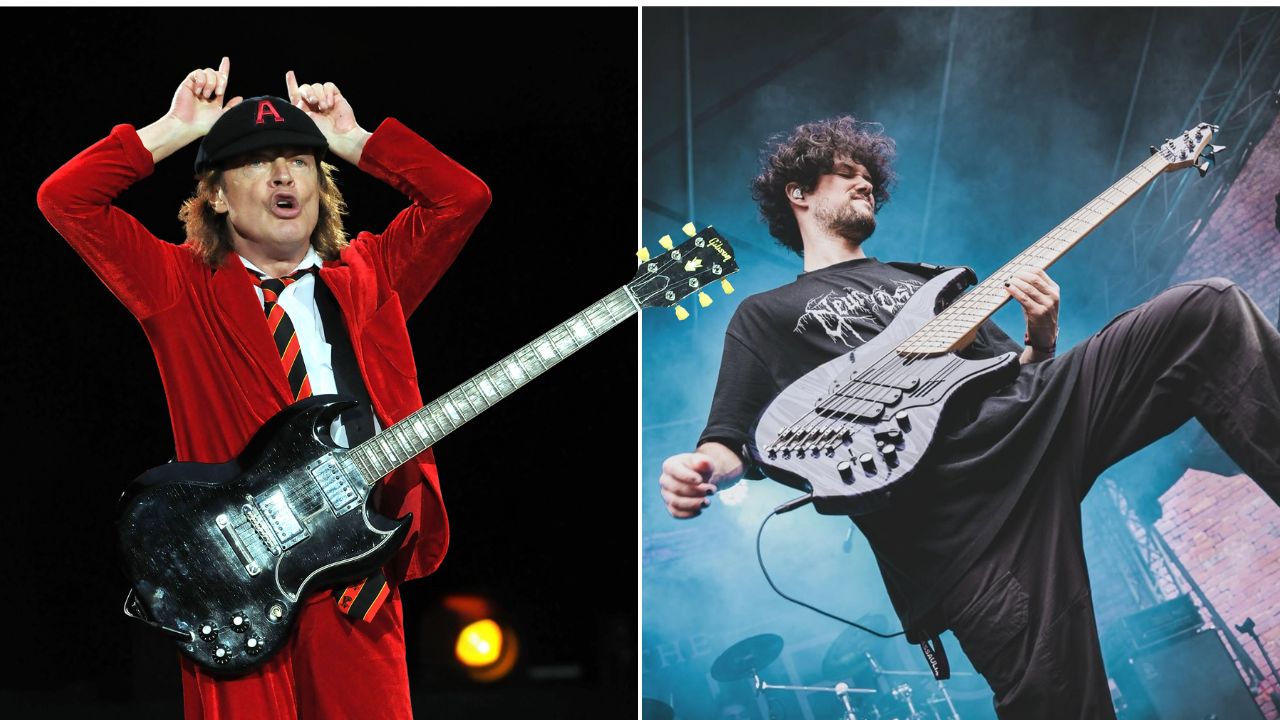
Lauded as one of the modern-day heroes of the electric bass, Toby Peterson-Stewart has enjoyed burning sessions with fellow bass guitarists Jacob Umansky and Clay Gober, and a string of bass-intensive performances with Australian three-piece, The Omnific – composed of Peterson-Stewart, fellow bassist Matt Fackrell, and drummer Jerome Lematua.
“Usually the bass is hidden, but in The Omnific everyone can hear every single thing you play,” Peterson-Stewart told Bass Player. “So my recent focus has been on developing better articulation on the bass, which is an inspiration that I got from certain guitar players. I think a lot of bass players could learn from that.”
Channelling his inner Angus Young, Peterson-Stewart recently released an outrageous take of AC/DC’s Thunderstruck. “The main motif was a really small idea, but I soon realised it was really similar to Thunderstruck – I actually thought it sounded like a djent version of that song! So I made a quick video clip that same day with the title If Thunderstruck Was Written in 2025.”
With a fanned-fret Dingwall NG in tow, Peterson-Stewart went on to give his version of Thunderstruck the full treatment, with slapping and tapping galore. “When the first video started getting noticed on Instagram and TikTok, I knew I had to try and turn it into a complete song.
“First I tried a version that resembled the original, but it just didn’t sit right with me. I’d previously come up with another riff that was in the same vein, so I slowed it down, changed the tuning, and started to combine the two.
“The fanned-frets of the Dingwall helped make some shapes a bit easier to obtain in certain positions. That bass also has a really clear sound for tapping.”
Asked about the recording process, he told Bass Player: “It's actually a combination of multiple takes. I also used a lot of parallel processing to split each track. For example, ‘Bass Left’ is a mix of different distortion styles spread over 4 tracks, which are then mixed back into 1 bus called ‘Bass Left Bus.’”
Was this approach one that he consciously pursued? “Honestly? No. I just went nuts and added lots of parallel distortion! I usually pick and choose how many different layers are happening in sections where there's automation, just to ensure the slaps are still heavy without sounding too distorted.
“I have breakdown videos available on my Patreon page for more insight into all of the plugins and routing that I used.”
Asked who his bass heroes are, Peterson-Stewart cites Evan Brewer as an influence from the outset of his love affair with tapping. “Evan has a song called Currency, which is really melodic, expressive and super clean. Everyone should check out this video where he plays the song with two basses at once.”
Having served up a mind-boggling display of fretboard explorations with The Omnific, Peterson-Stewart is the ideal man to ask for advice to any bass player wanting to hone a similar technique.
“Work on tapping octaves with your left hand, and then match it an octave higher with your right hand. That’s your biggest connection across the whole fretboard. Octaves are also a great harmonic anchor point and a good way to introduce tapping into any riff.
“Also, try tapping on the highest part of the fret, which will give you the strongest possible sound with minimal fret buzz.”







